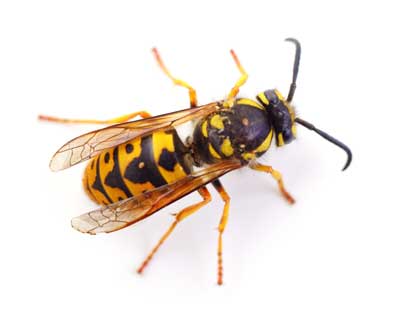How to Remove a Wasp Nest - Identification, Timing & Prevention
Got a wasp nest that needs to go? You’re in the right place. This guide will walk you through identifying different nest types, figuring out the best removal times, and deciding whether to remove it yourself or call in the professionals. Big nest or small, we’ve got you covered.
If you’ve ever wondered how to remove a wasp nest safely and effectively, this article explains what you need to know.
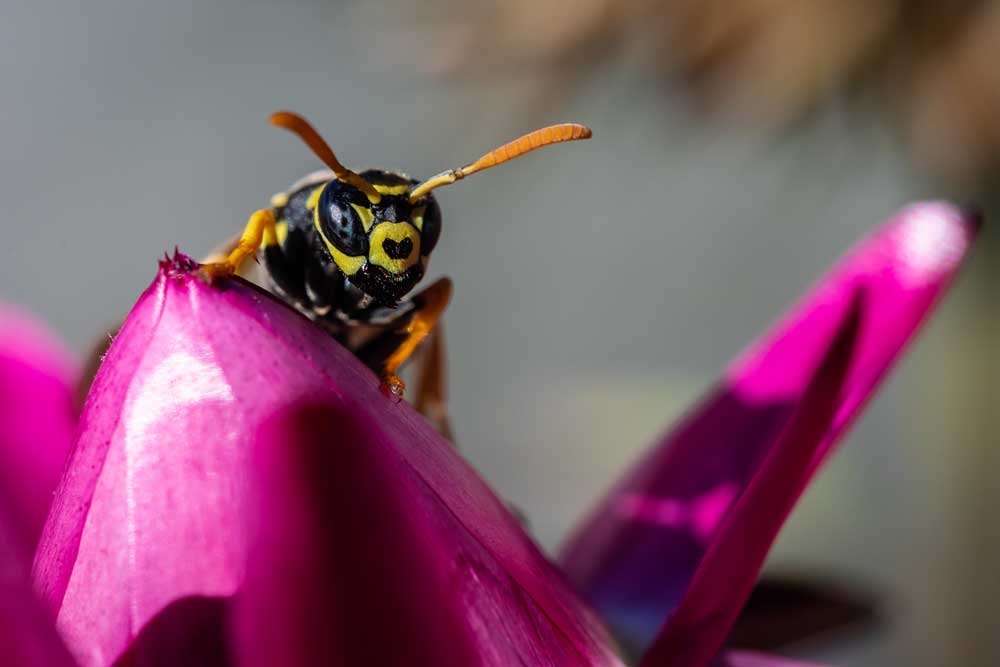
Key Takeaways
First things first, you need to know what type of nest you’re dealing with and where it is. They come in all sizes and pop up in the most surprising places.
Timing matters a lot here. Early spring is your best bet when the wasps are still sluggish and the nest is small. Much safer that way.
Don’t skip the safety gear. Protective clothing and smart removal methods will keep you sting-free and make the whole process go smoothly.
Identifying Wasp Nests
The first thing you’ll want to do is find the nest. Wasps aren’t picky; they build in sheds, under roofs, and even in lofts. A wasp nest in attic is a common surprise for homeowners during spring inspections, or up in trees. If you’re unsure how to deal with this, here’s how to handle a wasp nest in tree safely. Sometimes they pick sneaky spots like behind shutters or tucked away in garden corners. These nests start small in spring, maybe walnut-sized, but can grow to basketball size by late summer if left alone.
Different wasps build different homes, so here’s what to look for:
Paper wasps make those umbrella-shaped nests you see hanging under porch roofs and eaves. They’re pretty obvious once you spot them.
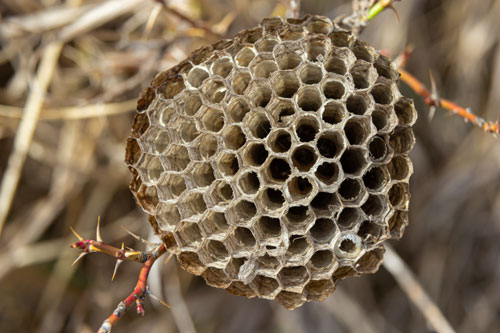
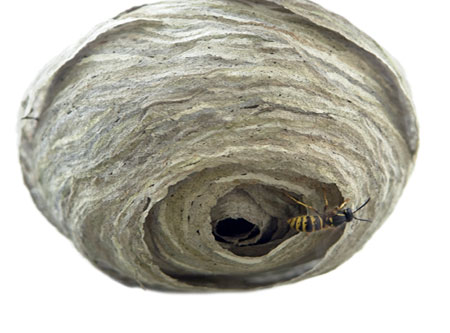
Yellow jackets prefer privacy; they build inside wall spaces or underground, often forming what’s known as a ground wasp nest.
Mud daubers go for the minimalist approach with small, tube-shaped mud homes stuck in building cracks.
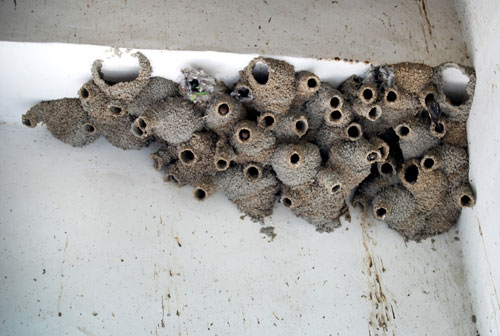
When to Remove a Wasp Nest
Timing is everything with wasp removal. Early spring is your golden window. The nests are small, there aren’t many wasps around yet, and they’re not as aggressive. It’s honestly the easiest time to handle this.
For the actual removal, aim for dusk or dawn when the wasps are taking it easy. Trying this during the day is asking for trouble; you’ll have angry wasps coming back to find their home under attack. Late summer nests are no joke either. By then, you’re dealing with a full colony of very defensive wasps.
Make a habit of checking around your property each spring. Catching a new nest early beats dealing with a massive one later. And if you find a big nest or one that’s hard to reach, such as a wasp nest in roof tiles, honestly, just call the professionals. They know how to remove a wasp nest safely and have the right gear.
DIY Wasp Nest Removal Methods
If you’re going the DIY route, you’ve got some good options. The soap and water spray is probably the simplest, just mix them up in a spray bottle and hit the nest at night when things are quiet. The soap clogs up their breathing holes, which does the job effectively.
Vinegar works too. It messes with their ability to find their way home and can double as trap bait when you mix it with some sugar water in a container. The wasps go in but don’t come out. Essential oils like peppermint, lavender, or clove mixed with soapy water make another decent repellent spray. These are commonly used in natural wasp removal methods.
Safety comes first, though. Gear up properly and consider slipping a large plastic bag over the nest, sealing it up tight to contain any angry wasps. If you still see movement after your first treatment, wait 24 hours and hit it again. Keep going until there’s no activity left. Learning how to remove a wasp nest effectively also means knowing when to stop and reassess.
Professional Wasp Nest Removal Services
Sometimes it just makes sense to call in the experts. Professional wasp nest removal services have the right equipment and training to handle tricky situations safely. They’re good at finding hidden nests in tough spots and making sure the job gets done completely.
Companies like WaspNestRemoval.ie offer same-day emergency service when you need fast results. With over 15 years in the business, they handle any nest removal challenge while following all the safety rules and regulations.
Going professional might cost more upfront, but it often saves money in the long run. They get it right the first time, which means no repeat infestations or property damage. For big nests or ones in hard-to-reach places, it’s your safest and most efficient option when figuring out how to remove a wasp nest properly.
Safety Precautions for Wasp Nest Removal
Safety isn’t optional when you’re dealing with wasps. You need proper protective clothing to avoid getting stung during removal. A full bee suit with hood, veil, and gloves gives you complete coverage. Make sure your gloves are thick and durable, and wear sealed boots so wasps can’t crawl up your legs.
Eye protection like goggles or a face shield is smart too, you don’t want to take a sting to the face. These precautions not only prevent stings but also let you work more confidently around the nest. Remember, wasps get more aggressive when their home is threatened, so being fully protected is crucial.
Anyone else around should also wear protection and stay at a safe distance during the removal. Methods like soap and water spraying can make wasps more likely to sting, so take your time and always put safety first when dealing with these defensive insects.
Preventing Future Wasp Infestations
Regular maintenance and smart prevention can keep wasps from moving in. Seal up cracks and gaps around your home to block potential nesting spots. Install fine mesh screens on windows and doors to keep them from getting inside. The best time for these preventive steps is late fall or early spring, either after the worker wasps die off or before nests become active.
Remove anything that might attract wasps in the first place. Clean up after outdoor meals right away to get rid of food scraps. Keep outdoor trash cans sealed tightly and away from entry points. A fake nest can work too; wasps are territorial and won’t build near what they think is another colony.
Natural repellents like wormwood, eucalyptus, and mint plants can help keep them away. Also, eliminate standing water sources around your property since wasps need water to survive. These small habits can reduce the chances you’ll need to figure out how to remove the wasp nest again in a future wasp breeding season.
The Role of Wasps in the Ecosystem
Here’s the thing about wasps: they’re pretty useful, even if they’re annoying. They provide important ecological benefits like pollination and pest control. Wasps naturally keep pest populations in check by eating aphids, caterpillars, and other garden pests, which means less need for chemical pesticides.
Some wasp species even help pollinate plants while they’re hunting for nectar. This pollination work is essential for plant reproduction and keeping ecosystems diverse. Without wasps around, we’d probably see pest populations explode and plant diversity decline.
Understanding what wasps do for the environment helps you make better decisions about managing them around your home. It’s about finding the right balance between safety and ecological responsibility when dealing with these flying insects, especially when figuring out how to remove a wasp nest without disrupting the local environment.
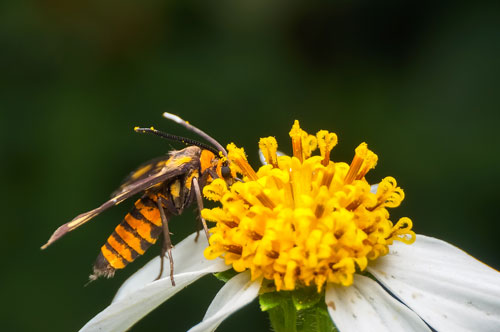
Common Types of Wasps and Their Behaviour
Different wasp species act differently and prefer different nesting spots.
Common yellowjackets or yellow wasps are probably what you’re most familiar with. They form large colonies with over a thousand members and can get pretty aggressive. They’re notorious for showing up at outdoor meals, especially in late summer and early fall.
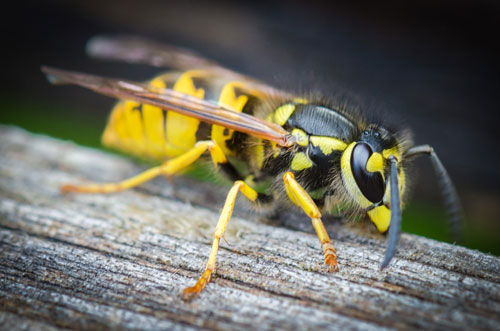
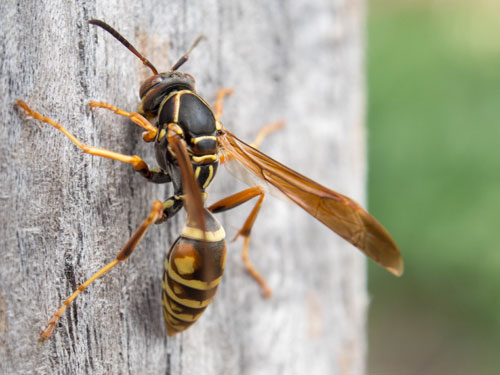
Paper wasps build their signature paper-like nests in protected spots like tree branches, under porch ceilings, and around doorframes. They’ve got long legs and black or brown bodies with yellow or reddish-brown stripes.
Bald-faced hornets are a type of yellowjacket, but they’re bigger and have distinctive white markings on their faces. You’ll usually find their nests in trees or bushes, large, round structures that are mostly black with white or cream accents.
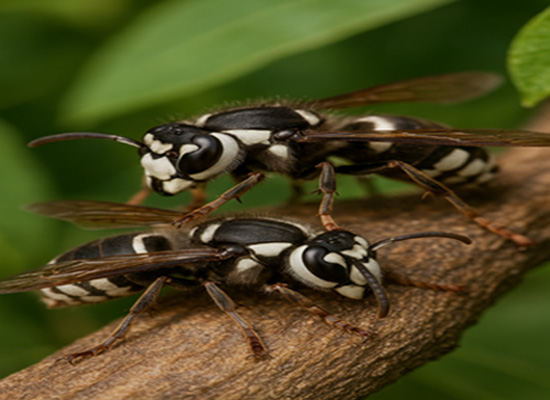
Knowing how different wasps behave helps you avoid disturbing them and handle any infestations more effectively. It also helps you decide when and how to remove a wasp nest based on the species type.
What to Do If You Get Stung
Wasp stings hurt and can be dangerous for some people. Here’s how to handle a sting:
1. Apply ice to the sting site for at least 20 minutes to reduce swelling and pain.
2. Elevate the affected area if possible to help bring down swelling.
3. Keep an emergency kit with an EpiPen and basic first aid supplies handy when removing wasp nests.
4. Get medical help immediately if you have multiple stings or if symptoms get worse.
Severe allergic reactions to wasp stings are serious. Watch for trouble breathing, swelling in the face or throat, or rapid heartbeat; these need emergency medical attention right away. Being prepared for wasp encounters is especially important when you’re planning to remove a wasp nest near your home.
Dealing with Old Wasp Nests
Good news, wasps don’t reuse old nests. Each spring, new colonies start fresh. To safely remove old nests, wear a face mask and slip a bag around the nest. Just make sure it’s empty first to avoid any unpleasant surprises.
After removing an old nest, take it outside and open the bag to check it out. You can compost the contents or just let them decompose in your garden. Old nests are typically empty in winter, so they’re safe to handle and dispose of properly.
Summary
Dealing with wasp nests comes down to identifying them, removing them at the right time, and preventing future problems. Safety should always be your top priority, whether you’re doing it yourself or calling in professionals. Knowing how to remove a wasp nest properly helps you protect your home while staying safe.
Keeping your property wasp-free means regular inspections, sealing entry points, and using natural deterrents. With the right knowledge and equipment, you can manage wasp problems effectively and keep your family safe and comfortable at home.
Need Help Removing a Nest?
Since 2008, we’ve been removing wasp nests from attics, fascias, sheds, and other tricky spots across Ireland. If the nest is large, hidden, or just too risky to handle yourself, professional removal is the safest choice.
Call us on 087 254 2839 to book an appointment for fast, safe, and secure removal, or get expert help from technicians who know exactly how to remove a wasp nest in any situation.
